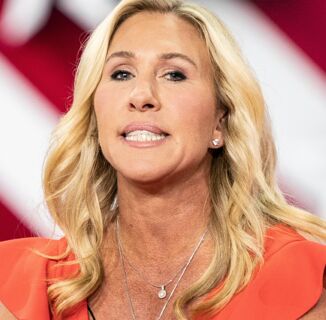Nearly nine in 10 California school districts have suicide prevention policies on the books, according to a newly released report.
Eighty-six percent of middle and high schools in California have established district-wide guidelines on suicide prevention in the two years since AB 2296 was signed into law, according to data compiled by the Trevor Project. That bill’s passage made California the first state in the country to require suicide prevention education which recognizes the particular needs of queer and trans youth.
Sam Brinton, head of advocacy and government affairs at the Trevor Project, said the result was much higher than what many expected.
“When I was talking to peers, they assumed only about 10 to 15 percent of schools across the state would have a policy,” Brinton (who uses gender-neutral pronouns) told INTO over the phone. “We showed that was completely opposite. Actually, it’s only about 10 to 15 percent that don’t have a policy. That’s a really big difference.”
The Trevor Project began surveying school districts in California earlier this year. Because there’s no enforcement mechanism for AB 2296, very few had ever been contacted about their policies.
While Brinton said oversight is key to ensure compliance, districts largely followed the law on their own accord.
“We know that AB 2246 has no punishment,” Brinton stated. “That means that a lot of these schools — the 86 percent — applied this policy because they knew it was the right thing to do.”
In the districts which had implemented suicide prevention policies within the past two years, the guidelines reportedly made a huge difference in the lives of queer and transgender young people. A significant number of LGBTQ students approached faculty and staff to say they finally “felt seen” by their administration.
Recognition of the particular challenges they face is critical for a vulnerable population disproportionately at risk for suicide.
Research shows queer youth are four times more likely than their heterosexual peers to have contemplated ending their own lives. Overall, half of transgender people report experiencing suicidal ideation at some point.
Equality California, which co-sponsored AB 2296, added in an email to INTO that suicide is the second-leading cause of death among young people.
“Behind those unacceptable statistics are young people — they’re people’s friends, children, siblings and neighbors,” said Communications Director Samuel Garrett-Pate. “We know that our teachers and school staff are on the front lines of awareness and prevention, so it’s critical that they have the proper policies, tools and training to identify warning signs and support young Californians in crisis.”
“We look forward to working with the Trevor Project and California school districts to continue strengthening those policies and get the percentage to 100,” he continued.
Advocates said a great deal more work is left to do.
Of the 14 percent of California districts which do not have suicide prevention programs, the majority are in rural areas. In conversation with the Trevor Project, many claimed they didn’t need guidelines on preventing suicide because in such small communities, everyone knows each other. Faculty and staff would know if there was a problem.
The reality is that’s simply not true, claimed Brinton.
“You may know them, but a student needs to see a policy to know that there is some set recourse or sense of responsibility,” they said. “We had that conversation with [these districts], and they recognize that even if we know Kimmy, Sally, and Bob, we need to make sure all three of them recognize that they’re going to be treated the same way when it comes to suicide prevention.”
“We’re all in this together as a community,” Brinton added.
What’s not in the survey, though, is how far school districts go in ensuring their suicide prevention guidelines specifically enumerate characteristics like sexual orientation and gender identity. The first challenge was to see if districts had the policies at all before focusing on LGBTQ provisions, its authors explained.
Researchers stressed, however, that this week’s report is merely the first in a series of surveys on the impact of California’s AB 2246. Authored by Assemblymember Patrick O’Donnell, the legislation also mandates middle and high schools adopt suicide prevention policies recognizing the needs of students who are homeless, enrolled in foster care, experiencing substance abuse, or diagnosed with a mental illness.
Sometime in the future, the nonprofit hopes to create a national database where users can access information on individual school districts’ suicide prevention policies. Because volunteers reached out to every single district in California, they have access to an unprecedented pool of data.
Advocates argued the undertaking may be the first of its kind, but it doesn’t have to be the last.
Continuing this work is important because LGBTQ youth need to hear the message they are “a part of this community,” Brinton claimed. They hoped the project tells queer and trans students: “We see you, and we’re going to make sure that you are recognized as a high-risk population that is not predisposed to suicide but needs to be better served.”
In 2019, the Trevor Project will sponsor legislation to bring LGBTQ-inclusive suicide prevention policies to other states.
Help make sure LGBTQ+ stories are being told...
We can't rely on mainstream media to tell our stories. That's why we don't lock our articles behind a paywall. Will you support our mission with a contribution today?
Cancel anytime · Proudly LGBTQ+ owned and operated
Read More in Impact
The Latest on INTO
Subscribe to get a twice-weekly dose of queer news, updates, and insights from the INTO team.
in Your Inbox
















